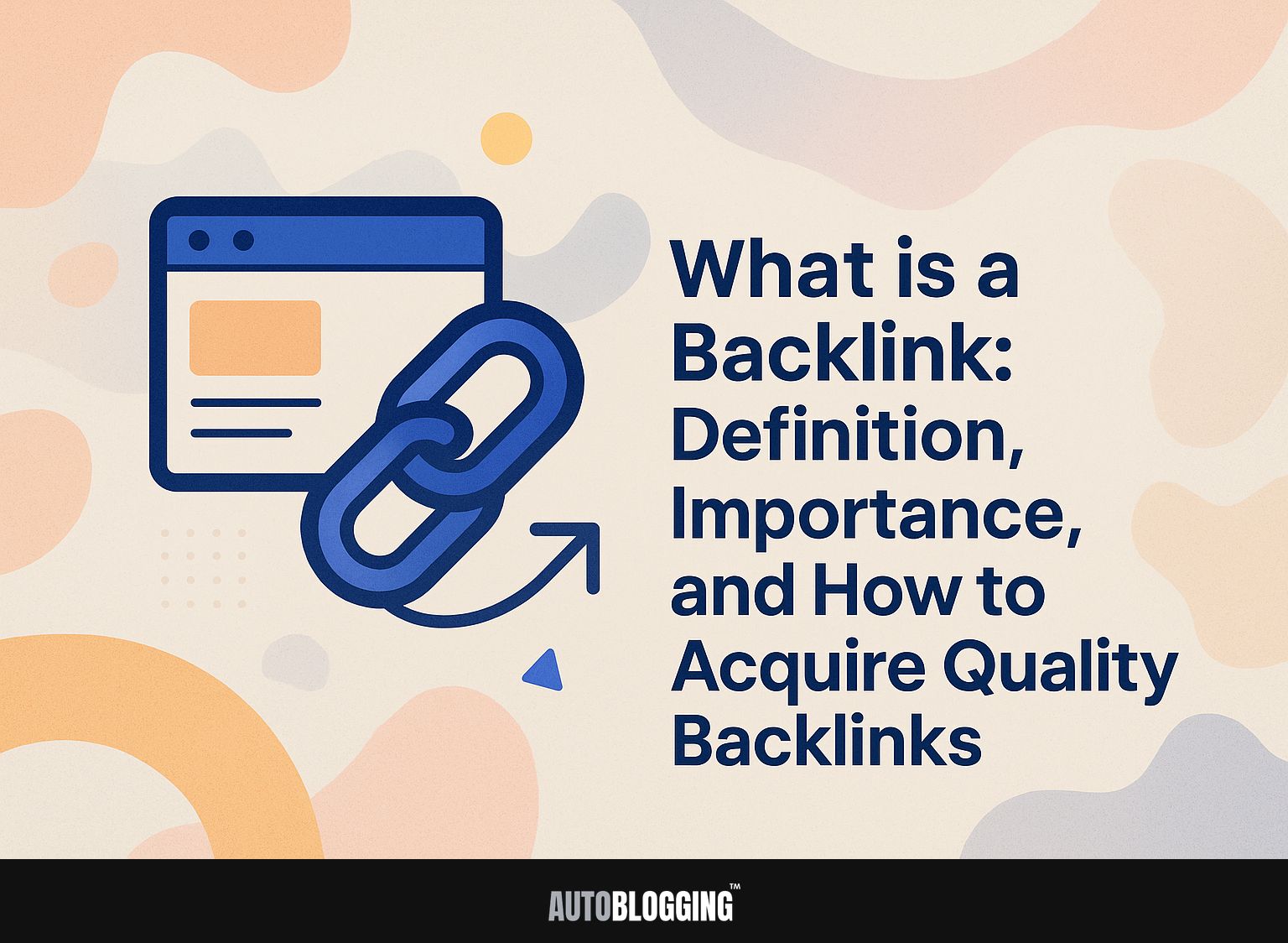
Backlinks are important for increasing your Google ranking and strengthening your website’s authority. As explained by industry leaders such as Forbes and Semrush, these links increase website visits and improve search engine rankings. In this article, we will explain what backlinks are, why they matter in online marketing, and ways to get good backlinks to improve your visibility on the internet. Get ready to use backlinks to improve your site!
Key Takeaways:
- A backlink is a link from one website to another, used to improve search engine rankings and increase website traffic.
- Quality backlinks are important for improving SEO and establishing credibility and trust with both search engines and readers.
- To get good backlinks, make useful content, write guest posts, use social media, and connect with influencers.
Contents
- The Definition of a Backlink
- Importance of Backlinks
- How Backlinks Work
- Quality vs. Quantity of Backlinks
- Strategies to Acquire Quality Backlinks
- Tools for Backlink Analysis
- Frequently Asked Questions
- 1. What is a Backlink and why is it important for my website?
- 2. What is the definition of a Quality Backlink?
- 3. How can I acquire Quality Backlinks for my website?
- 4. Can I buy Backlinks for my website?
- 5. How do I know if a Backlink is high-quality or not?
- 6. How can I monitor and track my website’s Backlinks?
1. What is a Backlink?
A backlink is a link from one website to another, showing a connection that can improve the linked site’s reputation and presence.
High-quality backlinks are important for SEO because they show search engines that your content is trustworthy. Try to get links from well-known sites like Forbes or TechCrunch, as these can greatly improve your site’s ranking.
Strategies to acquire such backlinks include:
- Guest blogging on reputable sites
- Collaborating on content creation
- Getting featured in industry-specific roundups
Using social media to share your content can get the attention of influencers, who might link to you. This can improve your visibility and SEO results.
2. Brief History of Backlinks
Backlinks have evolved from simple counts in early search engines to complex metrics influenced by algorithms such as Google’s Penguin and PageRank.
At first, backlinks were just about numbers. More backlinks meant higher rankings. Google’s updates have shifted the focus to the quality and relevance of links.
For instance, Penguin targeted manipulative link-building practices, reducing the effectiveness of low-quality backlinks. Building a good strategy for backlinks means producing content that encourages others to link to it on their own.
You can also use tools like Ahrefs or Moz to study competitor backlinks. By concentrating on being credible and pertinent, marketers can build lasting SEO success and raise their rankings.
The Definition of a Backlink
Knowing the types of backlinks is essential for a strong SEO plan and boosting your website’s position in search results. Understanding how these backlinks relate to domain authority can further enhance your strategy, as outlined in our analysis on Domain Authority (DA) and its impact on SEO.
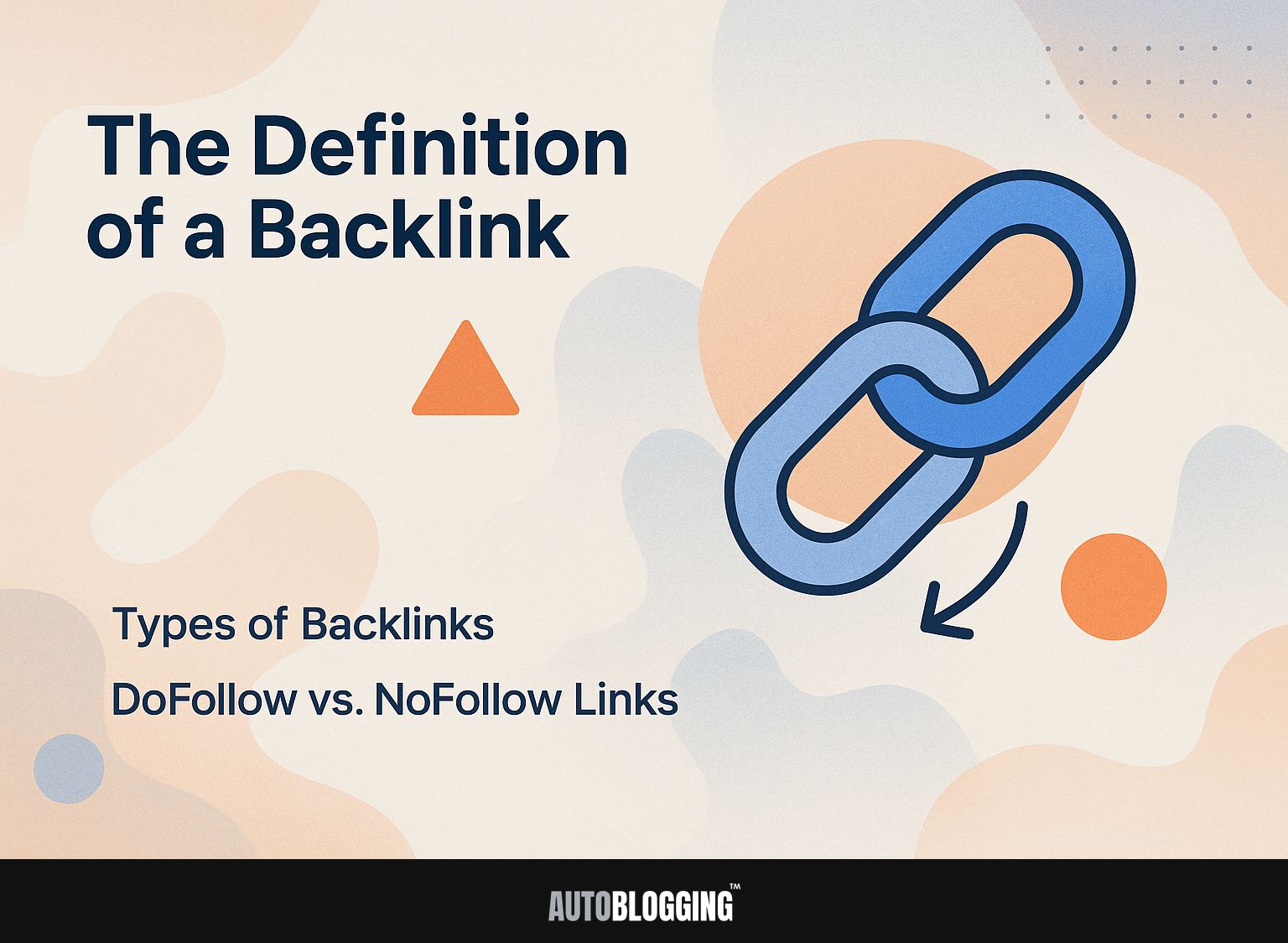
1. Types of Backlinks
Backlinks come in various forms, such as editorial links, guest post links, and directory submissions. Each of these affects SEO in different ways.
Editorial backlinks happen when you’re mentioned in articles or blog posts, which can make you seem more trustworthy. For example, being mentioned in a well-known publication like Forbes can greatly improve your reputation.
Guest posts are another effective method-writing an article for a site like Entrepreneur can link back to your website, driving traffic.
Directory submissions on niche-specific sites, such as Yelp for local businesses, can provide targeted exposure and improve search visibility. Each type is important in a complete SEO plan, so it’s necessary to have a variety of backlinks.
2. DoFollow vs. NoFollow Links
DoFollow links pass on ‘link juice’ and influence SEO rankings, while NoFollow links do not pass authority, affecting their value in backlink strategies. In practice, use DoFollow links when you want to improve your site’s authority, such as linking to reputable industry blogs or influential sites.
Conversely, NoFollow links are appropriate for user-generated content, like comments or forums, where you’re interested in traffic but not necessarily passing authority.
For example, linking to a blog in a guest post should be DoFollow to improve its SEO. Meanwhile, social media links are often NoFollow, protecting your site from potential spam while still driving engagement.
Importance of Backlinks
Backlinks are important for increasing a site’s credibility, improving its presence on search engines, and attracting visitors naturally. They are a crucial part of off-page SEO strategies, which encompass techniques beyond your own website to enhance online visibility and trust. Learn more about these strategies and their benefits in our comprehensive guide.
1. Impact on SEO
Backlinks significantly impact SEO, with studies showing that websites with a strong backlink profile rank higher in search results.
For instance, a study by Moz found that the top-ranking pages on Google have an average of over 30 backlinks from unique domains. Tools like Semrush can help you analyze your backlink profile.
Start by assessing which pages are currently ranking and identify their backlinks. Then, focus on acquiring high-quality backlinks through:
- Guest blogging
- Collaborating with influencers in your niche
- Creating shareable content like infographics
These strategies can strengthen your site’s reputation and increase its ranking on search engines.
2. Building Authority and Trust
Links from respected sites such as Harvard or BuzzSumo improve your site’s trustworthiness and influence in its field.
To build high-quality backlinks, employ strategies such as guest blogging or creating shareable content. Write articles that connect with your readers and submit them to well-known blogs in your field. Use tools like Ahrefs to identify high-domain authority sites in your niche and monitor your backlink profile.
Using social media outreach can increase your efforts-sharing your content with influencers may result in natural opportunities for backlinks. A good plan for backlinks usually requires patience but greatly increases your site’s exposure.
3. Referral Traffic
Backlinks are important for SEO and also bring visitors from other sites, which can lead to more interactions and sales.
Effective backlink strategies can significantly drive referral traffic, as demonstrated by case studies like HubSpot. By strategically placing links within high-authority sites, they generated a 30% traffic increase over six months.
Another example is Neil Patel, who used guest posting to get backlinks, which led to a 40% increase in organic traffic.
To implement your strategy, concentrate on creating excellent content that draws links. Use tools like Ahrefs or SEMrush to find sites you can reach out to. Regularly checking your backlink profile will help maintain steady growth in website traffic.
How Backlinks Work
Knowing how backlinks function, including the importance of anchor text and link value, is essential for successful link-building methods. Related insight: Navigating Agentic SEO for Executive Leaders: Insights and Strategies offers a deeper understanding of how strategic SEO practices can enhance these processes.
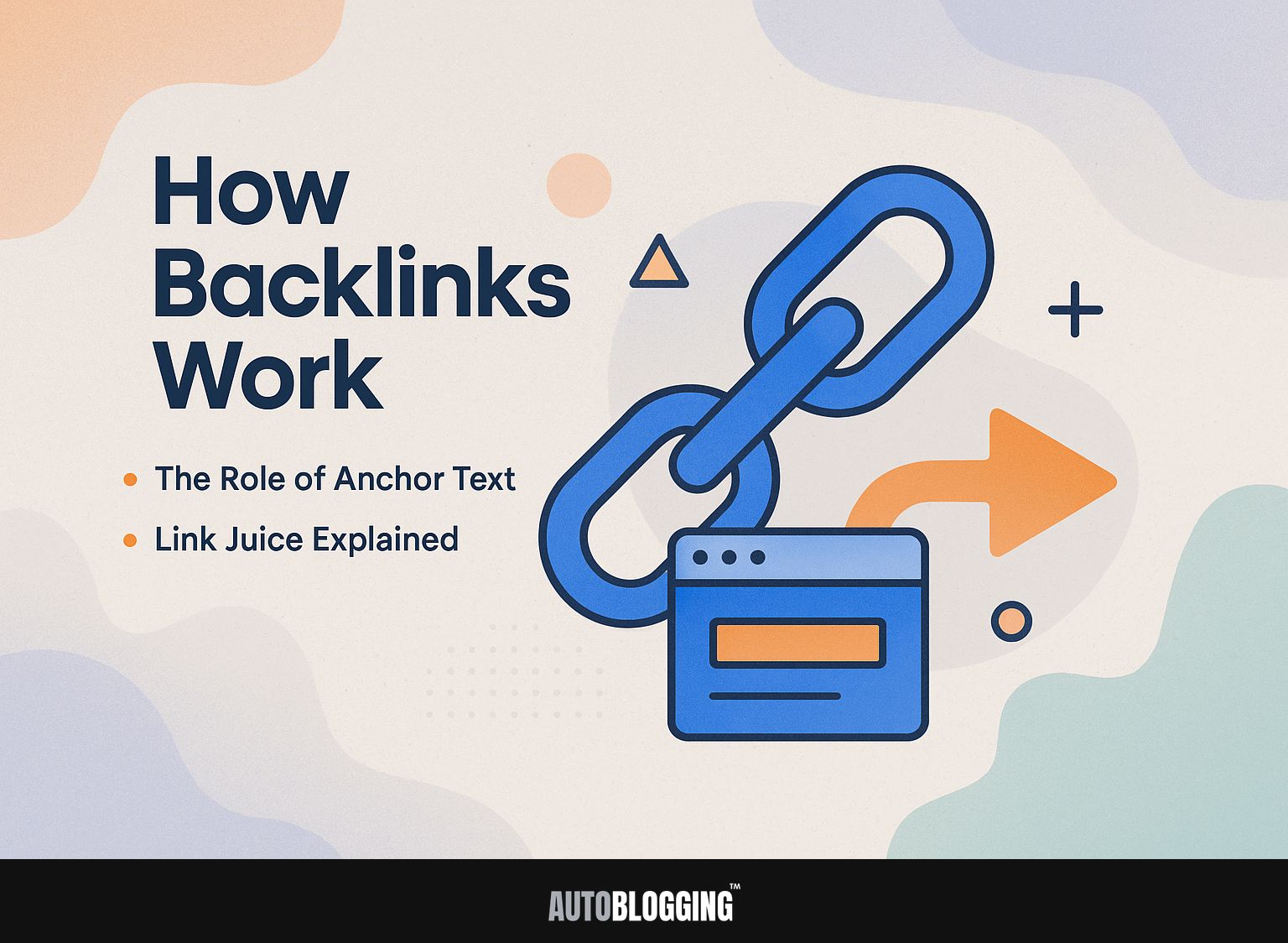
1. The Role of Anchor Text
Anchor text serves as a clickable hyperlink that provides context about the linked content, influencing SEO rankings and user experience.
Using relevant anchor text significantly affects your SEO strategy. Focus on keyword-rich phrases that describe the linked page.
For example, if you’re linking to a guide on digital marketing, use anchor text like “detailed digital marketing strategies” instead of just “click here.” Tools like SEMrush can check your anchor text variety, finding chances for improvement.
Successful campaigns often use A/B testing to find out which anchor text versions result in better click-through rates and rankings. Make sure your links fit smoothly into the content and make sense to help users stay interested and improve search rankings.
2. Link Juice Explained
Link juice means the value passed from one website to another through backlinks, which is important for SEO rankings.
It is primarily calculated based on the number and quality of links pointing to a page. Backlinks from well-respected sites give more value than many links from less credible sources.
To get the most out of link juice, use strategies like:
- Creating shareable content that naturally attracts backlinks,
- Utilizing guest blogging to gain links from reputable sites,
- Ensuring internal links distribute page authority within your site.
Regularly auditing your backlink profile using tools like SEMrush or Ahrefs helps identify and strengthen weak points in your strategy.
Quality vs. Quantity of Backlinks
For backlinks, it’s usually more effective to have a few good ones than many poor-quality ones. This concept aligns with broader discussions in SEO, such as the ethics of content modification for optimization (see our analysis by Google on the ethics of SEO optimization).
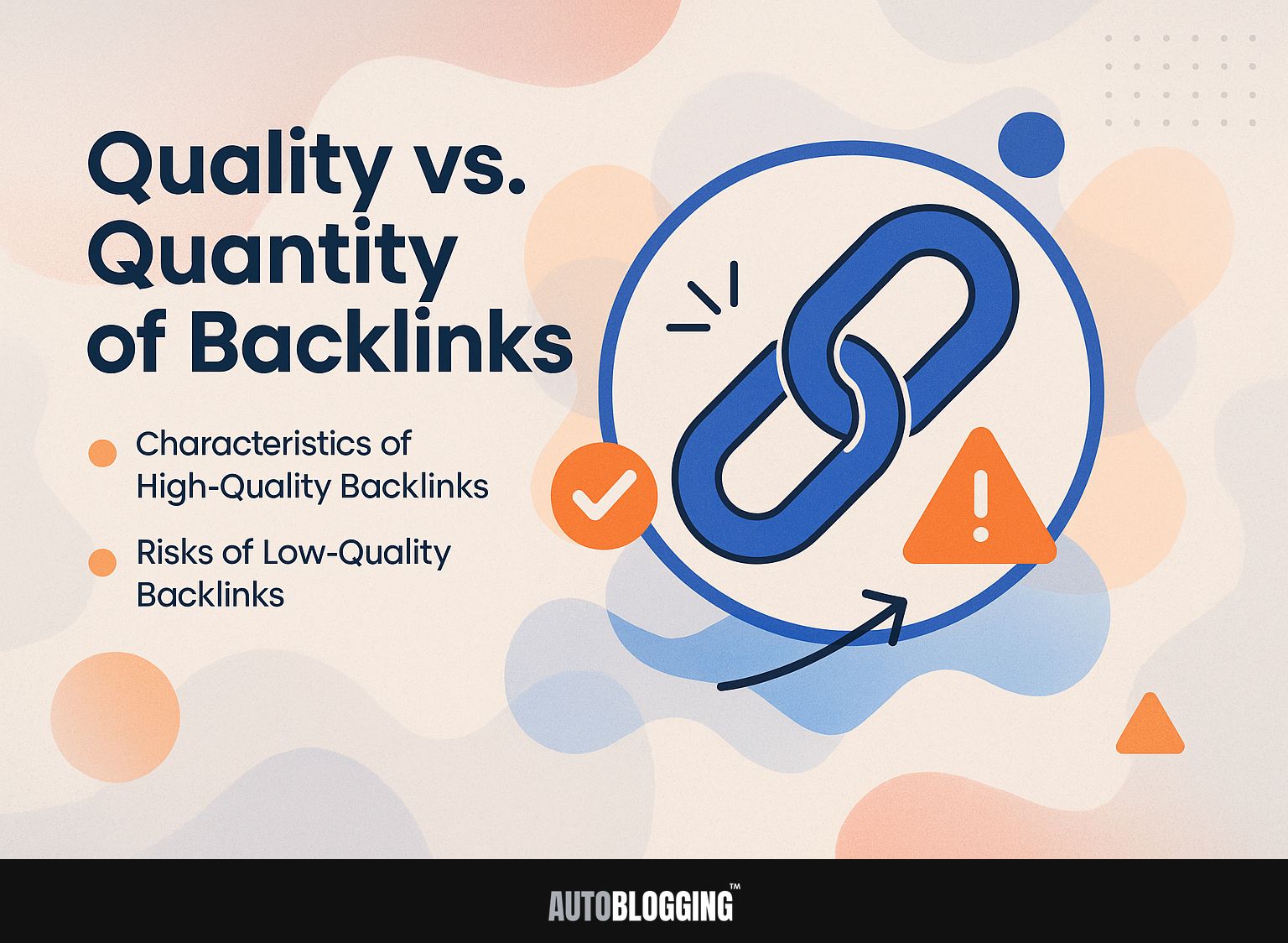
1. Characteristics of High-Quality Backlinks
Backlinks from well-respected and related websites can greatly improve SEO when they use anchor text related to the content.
To acquire such backlinks, consider these strategies:
- First, engage in guest blogging on reputable platforms like The Guardian or Forbes, ensuring your content is relevant to their audience.
- Second, use tools like BuzzSumo to find well-liked articles in your field and give useful information or extra data to the original writers.
- Third, join industry-related forums or social media groups. Share your knowledge and, when it makes sense, link back to your site.
These methods improve your backlink profile and show you as an expert in your field.
2. Risks of Low-Quality Backlinks
Low-quality backlinks can lead to Google penalties, harming your site’s ranking and reducing overall visibility in search results.
For instance, the travel site XYZ.com faced a drastic drop in traffic after utilizing a link-building strategy that included spammy directories and low-quality guest posts. As a result, their Google ranking fell by 50%.
To improve your backlink profile, concentrate on getting links from trustworthy sources, like industry blogs or well-known news outlets.
Tools like Moz and Ahrefs can help analyze your link quality. Monitor your backlinks regularly to identify and disavow harmful links, thus protecting your site’s integrity and search performance.
Strategies to Acquire Quality Backlinks
Using good methods is important for getting quality backlinks that improve your website’s authority and ranking. Incorporating techniques such as guest blogging can significantly enhance these efforts by providing authentic opportunities for link-building.
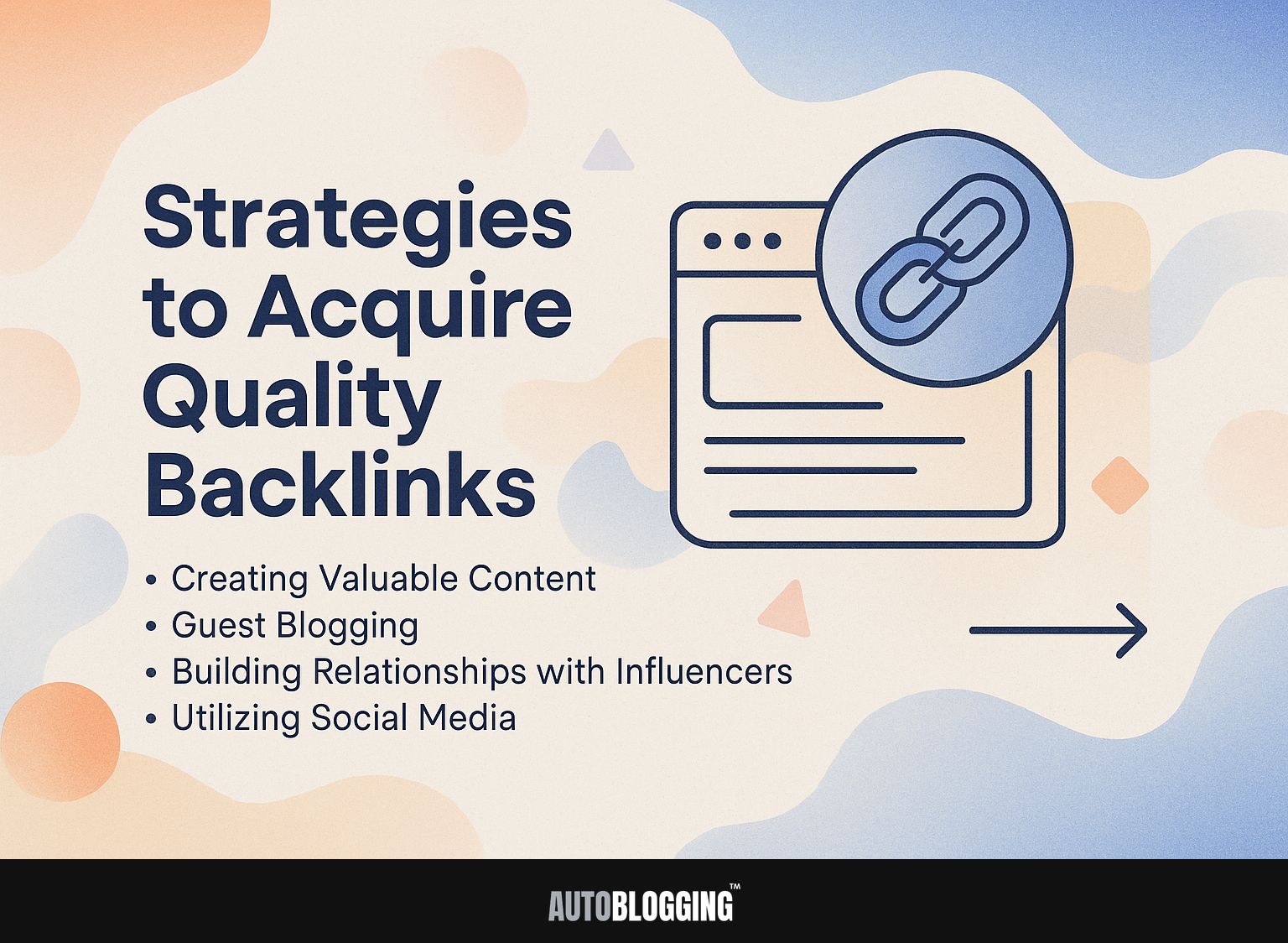
1. Creating Valuable Content
Creating helpful content that satisfies what users are looking for can naturally attract backlinks, making your site a trusted source.
To get the most out of backlinks, create detailed guides, case studies, or infographics that people can easily share. For example, a thorough guide titled ‘Effective SEO Strategies for Small Businesses’ supports your audience and is more likely to be shared by others in the field.
Tools like BuzzSumo can help find popular topics, letting you produce content that connects with people at the right time. Remember to promote your top-performing pieces via social media and outreach to relevant blogs for increased visibility and potential backlinks.
2. Guest Blogging
Guest blogging on reputable sites can be a powerful way to gain backlinks while also reaching a wider audience in your niche.
To maximize your guest blogging efforts, start by identifying target blogs that align with your niche. Use tools like BuzzSumo to find popular blogs, focusing on those with high domain authority.
Next, create an interesting pitch by showing how your guest post can benefit their readers. Customize your communication by mentioning their latest articles and sharing why your specific thoughts are important. Make sure to follow up if you don’t hear back within a week, as persistence can pay off.
3. Building Relationships with Influencers
Building relationships with influencers in your industry can lead to quality backlinks and increase your site’s visibility.
To establish strong connections, start by identifying influencers who align with your brand values. Send messages that focus on common interests.
Use tools like BuzzSumo or Followerwonk to find key people in your field, checking their engagement rates and audience details. Give something useful first, like promoting their content or sharing helpful information.
As relationships grow, propose collaboration opportunities like guest posts or webinars that benefit both parties, reinforcing the partnership. Building these connections creates a helpful network, leading to lasting attention and participation.
4. Utilizing Social Media
Sharing your content on social media can help more people see it, which can lead to more links from those who find it interesting.
To effectively use social media for promoting your content, focus on three key strategies.
- Start by posting interesting images or quick videos that give a summary of what you have to say, allowing people to share them easily. For example, BuzzFeed often uses eye-catching images to link back to their articles.
- Engage with relevant communities on platforms like Reddit or Facebook Groups by providing value and subtly linking your content.
- Implement a scheduled posting strategy using tools like Buffer or Hootsuite to maintain visibility and target optimal engagement times. This method can greatly increase your visibility and the number of backlinks you get.
Tools for Backlink Analysis
Using tools to examine backlinks is important to check your backlink collection and find ways to make it better.
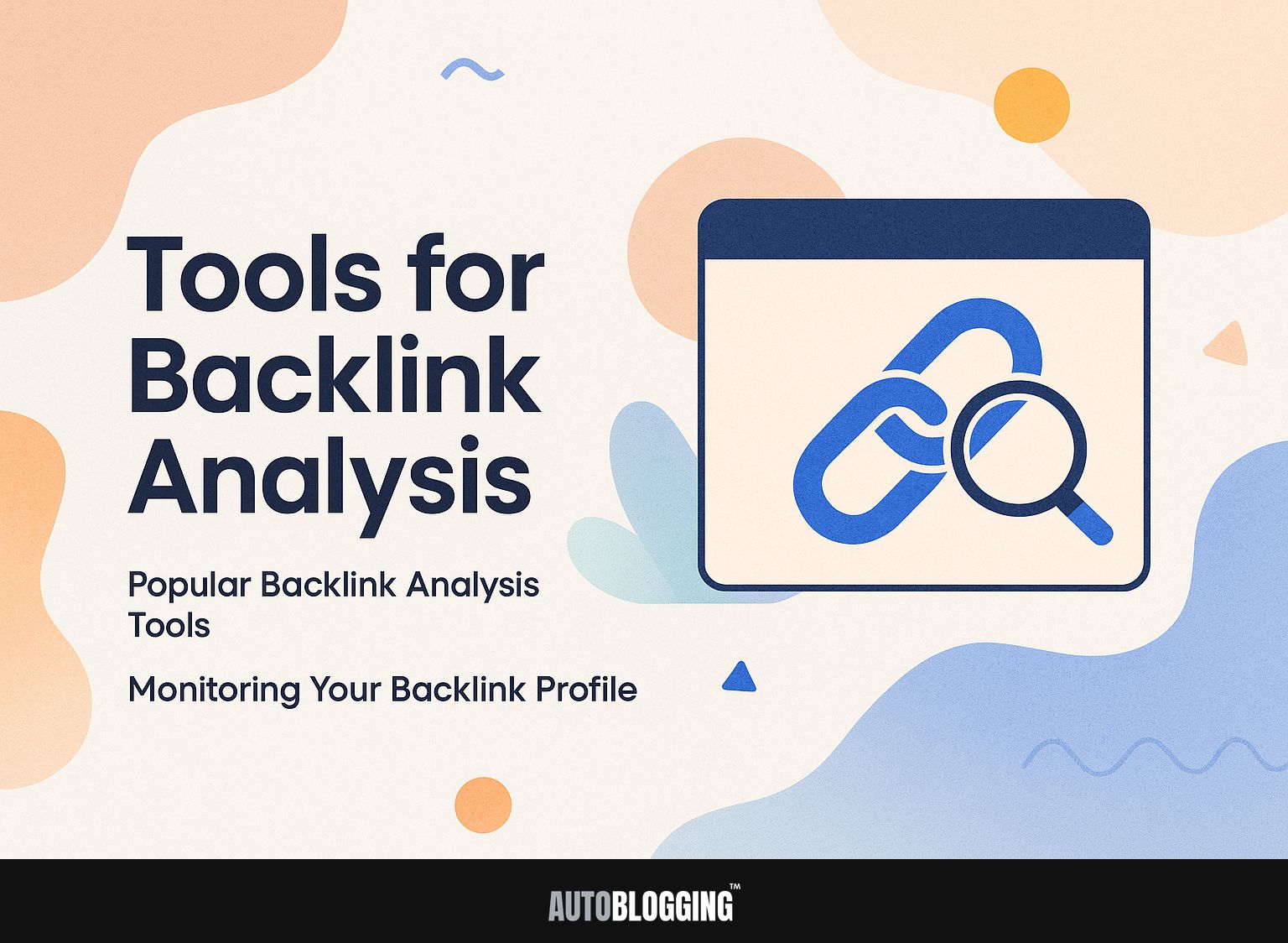
1. Popular Backlink Analysis Tools
Some of the most popular backlink analysis tools include Semrush, Ahrefs, and Moz, each offering unique features for monitoring backlinks.
Semrush costs $119.95 per month and is known for thorough domain evaluations that help track competitors’ backlinks effectively.
Ahrefs ($99/month) is great because it has a big database of links, offering useful information about the best links.
Moz Pro is priced at $99 per month and has a user-friendly interface with tools such as Open Site Explorer for evaluating link quality.
Choose based on your needs:
- For detailed competitor analysis, use Semrush;
- For extensive link databases, opt for Ahrefs;
- For simplicity, Moz Pro is ideal.
2. Monitoring Your Backlink Profile
Regularly checking your backlink profile helps keep good SEO practices and keeps you informed about any possible problems.
To effectively monitor backlinks, start by setting up Google Alerts to receive notifications when your site is mentioned online. This tool will keep you informed about new backlinks in real-time.
Next, use analytics platforms like Semrush or Ahrefs to analyze your backlink profile and track any changes over time. Regularly checking metrics such as referring domains and anchor text can reveal trends and potential problems.
Look at your backlink profile each month and adjust your strategy according to the results.
Frequently Asked Questions
1. What is a Backlink and why is it important for my website?
A backlink is a link from one website to another. It is important for your website because search engines use backlinks as a way to determine the credibility and authority of a website. The more quality backlinks your website has, the higher it will rank in search results.
2. What is the definition of a Quality Backlink?
A quality backlink is a link that comes from a reputable and relevant website. This means that the website linking to yours should have good content, high domain authority, and be related to your website’s niche. Quality backlinks help to improve your website’s search engine ranking and drive more traffic to your site.
3. How can I acquire Quality Backlinks for my website?
You can get good backlinks in several ways, like writing excellent content that people want to share, connecting with websites in your field, writing guest posts for well-known websites, and adding your site to online directories. It’s important to focus on quality over quantity when acquiring backlinks for your website.
4. Can I buy Backlinks for my website?
It is not recommended to buy backlinks for your website as search engines consider this as a violation of their guidelines. Buying backlinks can result in penalties and harm your website’s ranking. It’s best to focus on natural and organic ways of acquiring quality backlinks for your website.
5. How do I know if a Backlink is high-quality or not?
A high-quality backlink should come from a relevant website with good content and high domain authority. You can use online tools to check a website’s domain authority and backlink profile to determine if it is a quality backlink. Make sure the linked website is relevant to your niche to get the most benefits for your own site.
6. How can I monitor and track my website’s Backlinks?
You can use online tools, such as Google Search Console, to monitor and track your website’s backlinks. These tools provide information on the number of backlinks, their source, and the anchor text used. Check your website’s backlinks often to make sure they are good quality and match your website’s topic.
